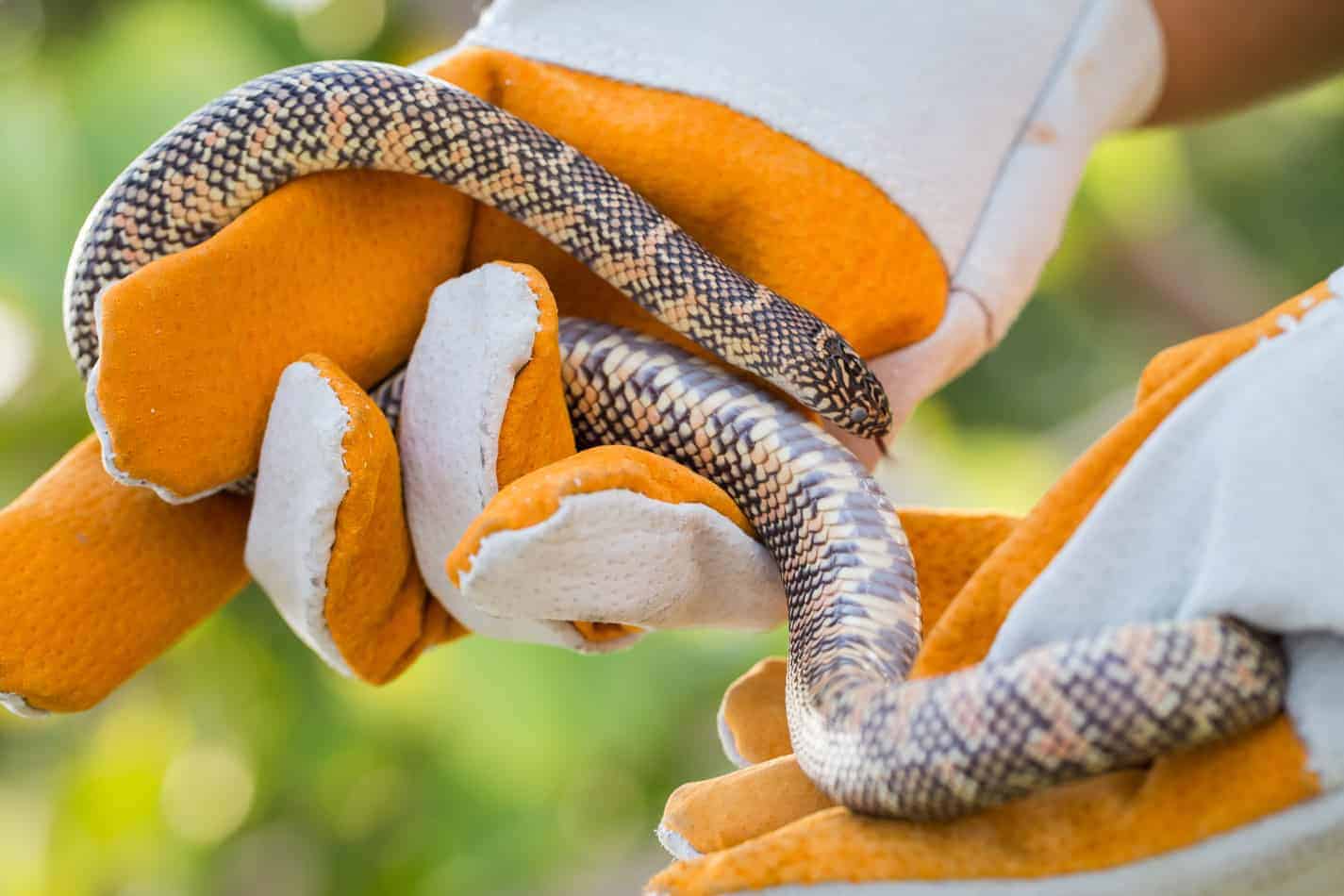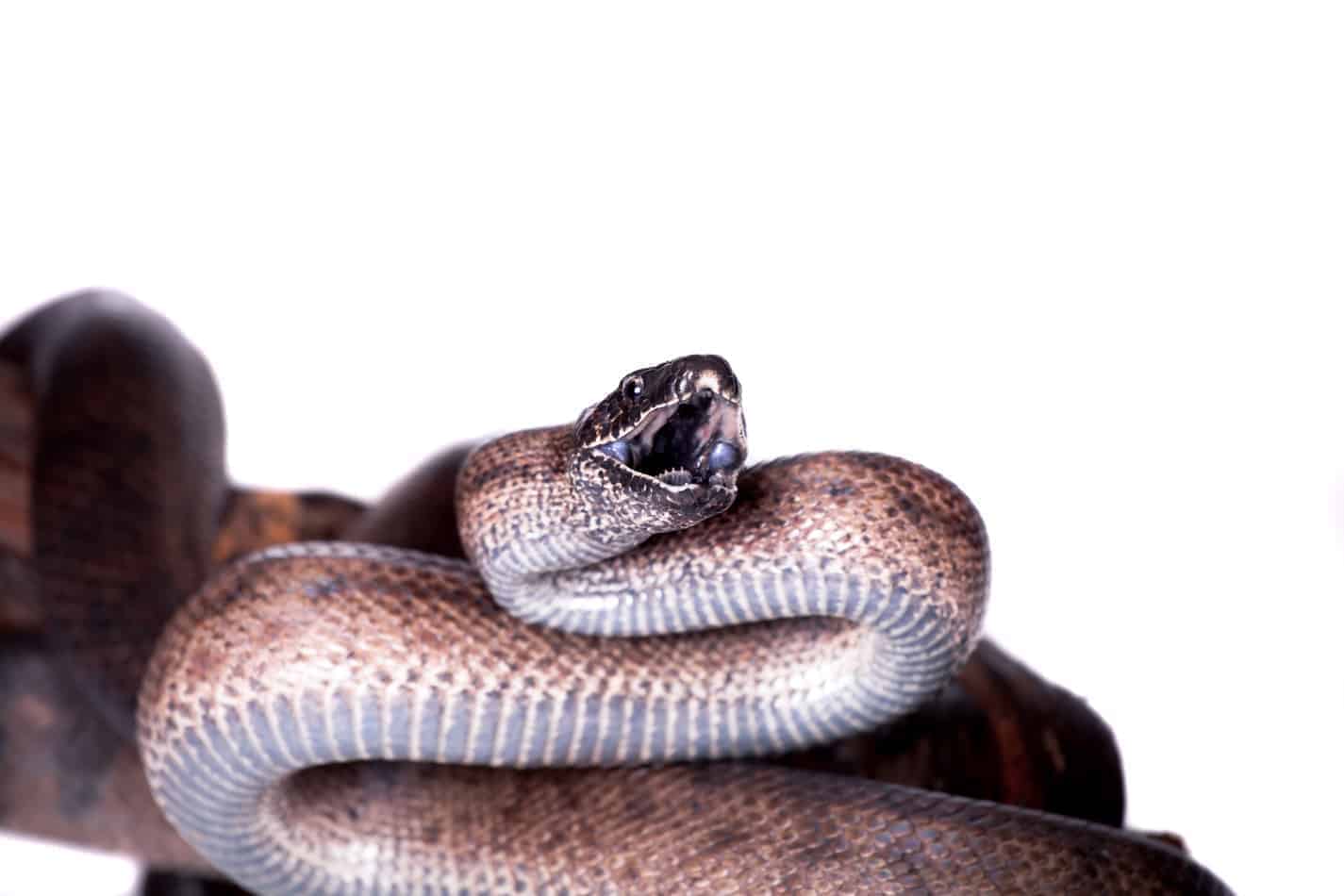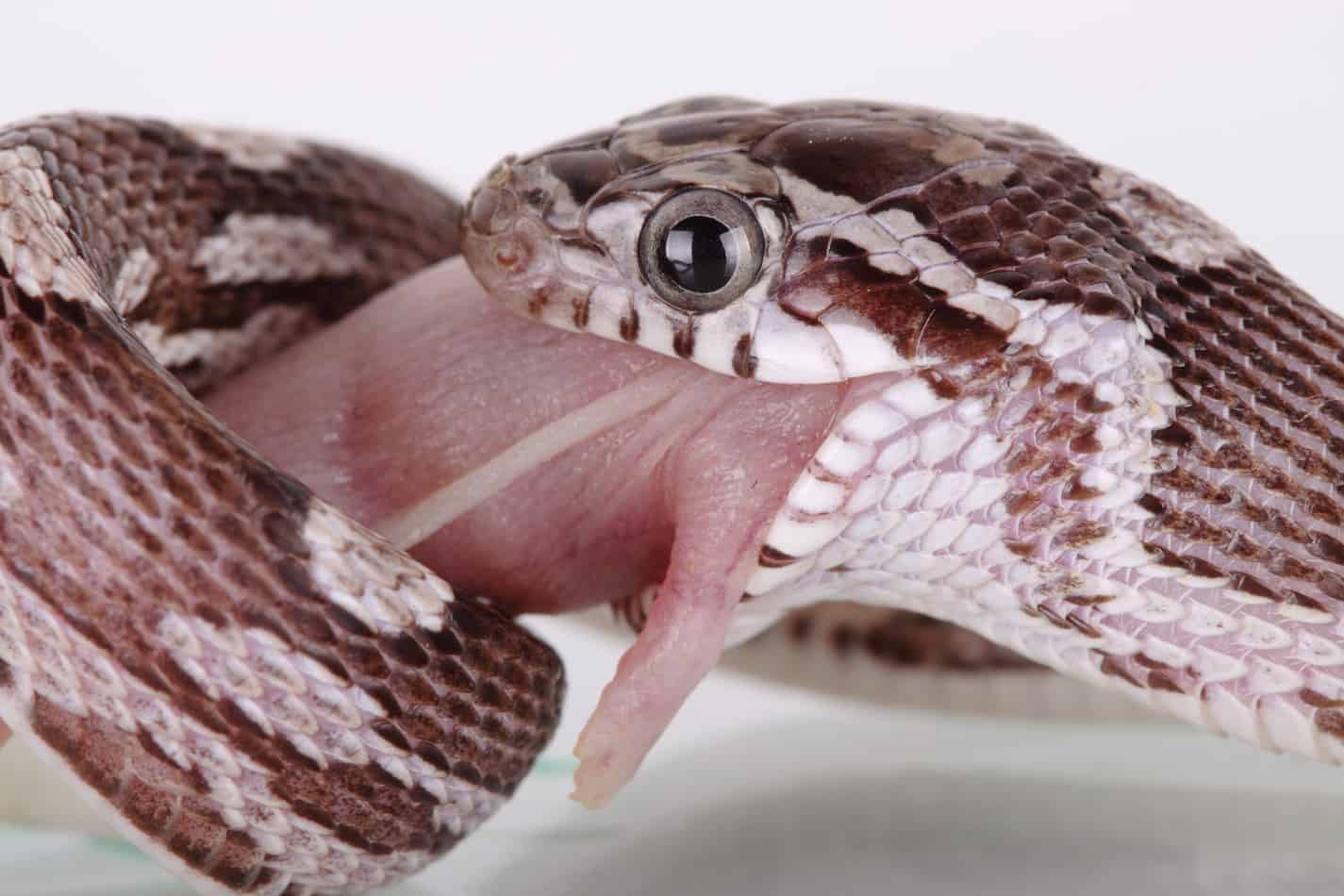How To Catch a Snake Safely (With Pictures)
Snakes are fascinating creatures and it may be tempting to try and catch one. Unless you know what you are doing, I would advise you not to. However, if you are a crazy adventurer and this is on your bucket list, I guess it’s my responsibility to be as helpful as possible.
How does one catch a snake? Protect your body by making sure that you wear gloves. Pin the snake down or trap it to keep it from moving and then put it in a contain to release in a different area. If you are not fast and accurate, it will most likely bite you.
If you are planning on catching one, there are a few things you need to know to be successful and safe in your endeavor. Included are a few steps and pointers on how to catch snakes without injuring yourself and others.
How To Catch a Venomous Snake
Remember, there are many different kinds of snakes. Some are aggressive, others are venomous or non-venomous, and some are aggressive and venomous. Whatever the case may be, you need to be educated on what snake you are trying to catch before you even begin.
The most common venomous snakes you may need to catch (in the USA) are the copperhead, cottonmouth, Diamondback rattlesnake, and the coral snake.
It isn’t advisable to try and catch a venomous snake unless it is a necessity.
If your home and family are in danger then you definitely want to get rid of it as humanely as possible.
Don’t be like my dad who cut off the head of a rattlesnake with a shovel in our Utah backyard because it went near my mom…I’ll never
However crazy my dad can be, he does teach something very important. When dealing with a venomous snake you can never be too careful. Venomous snakes can seriously injure or kill a person.
The best method for catching a venomous snake is to call a professional. If you are doing it for fun (which I highly doubt and sincerely hope that you are not) or you just don’t have the funds to call a professional, or you just want to show off your protective instincts like my dad, be sure to use extreme caution and wait for the snake to be a bit more relaxed.
Note: Always wear gloves if you are choosing to catch it by hand.

Here is a list of things you might want to have with you if you are catching a snake on your own:
- Gloves
- Snake Bite Kit
- Pillowcase, bucket, or fishnet
- Snake Tongs (Click here for Snake tongs)
- Snake Trap (Click here for a great trap on Amazon!)
- A Shovel…(Just Kidding. Please don’t kill any snakes!)
Always have a first aid kit/snake bite kit around and be near someone with a phone in case of an emergency.
The pillowcase, bucket, or fishnet is to hold the snake. The ideal would be something that is small and dark. Most snakes are more comfortable in small and dark places- that is their natural dwelling of choice.
If a snake feels threatened or is ready to strike they usually form their bodies into an ‘S’ shape. If a snake does this, either wait for it to calm down or use your snake tongs. (If you don’t have snake tongs you can use a forked stick…although it might be a bit harder for you to keep a hold on it with a stick.)

There are many different kinds of snake traps. The two most common of traps would be a sticky trap or a trap they can slither into but not out of. A snake trap is a great way to safely catch a snake if you are doing it for pest control.
If you are doing it for fun or you just don’t want to use a trap, here are the steps you should take:
- Do not approach the snake by surprise: Catching a snake by surprise will increase the likelihood that he/she will strike. Approach the snake calmly and obviously. The snake should perceive you and hear you.
- Observe the snake’s body language: A snake that is on guard will generally coil up into an “S” shape. If a snake is calm, it will flick its tongue out to taste the air and get a feel for your scent. The tongue flick is usually a good sign and it’s probably safe to approach.
- Approach to the side: Do not approach the snake in the back by the tail, or the front by the head. Snakes are good at attacking from their front and back. They can easily strike from those two sides of their body.
- Coax or Pin it down: Coax the snake with a broom or stick into whatever you have to catch it. Or, you can pin it down with your snake tongs (or forked stick) at the back of the head. Be careful not to press too hard or you will injure its spine. Apply just enough pressure that it won’t be able to get away.
- Relocate: If you are trying to relocate a snake, put your catch in a bag or other small, dark place, and drive/walk it to a safer home. You may want to do some pre-research to discover where that should be. If it’s a venomous snake, you probably don’t want to relocate it to your neighbor’s yard.
- Setting it Free: Now, I would most likely throw it and run, but… Well, that wouldn’t be the best method. The best thing to do would be to be as gentle as you can, and put enough distance between the two of you so that you are out of any danger of being bitten.
How to Catch a Non-Venomous Snake
The method to catch a non-venomous snake is very similar to the method of catching a venomous snake.
The only difference between the two is that a non-venomous snake can usually be grabbed by hand. If they are aggressive they can still bite you, and some carry diseases, but you won’t be in any grave danger.
There are many different types of non-venomous snakes.
- Water snakes
- Garter snakes
- Pythons
- Boas
- Kingsnakes
- etc.
Some of these snakes are larger than the others, but you can still catch them all the same way.
If you are going to catch a snake by hand, you follow the same protocol given you in the previous section on venomous snakes. The only difference is that some of them you can catch with both hands and gently pick them up.
If the snake is docile enough, you can hold it easily with both hands. Be sure that you even out their weight so they are comfortable and don’t feel threatened.
The king snake is a good example of a more docile snake and you could probably catch one without it being too aggressive. A garter snake is a bit more aggressive, and it may try to bite you, but once calmed down is fine to hold.
Will a Snake Bite Me If I Grab Them By the Tail?

First of all, why would you grab a snake by the tail?! Second, do not grab snakes by the tail! I get it, you may feel safest grabbing a snake at the back because it’s further away from its head, but a snake can still bite you. Not only will you look funny, but it also isn’t the most effective or comfortable way to catch a snake.
A snake probably will not be able to bite you on the hand if you grab it by the tail, but it can easily bite you somewhere else like your legs and crotch. I learned that from my research and thankfully not from experience!
If you are going to catch a snake, coax it, put down a snake trap, grab it right behind the head (you should only grab it behind the head if it is larger and non-venomous) or just call professional. When all else fails, if you don’t know what you are doing, call a professional. Professionals are experienced in what they do.
If you are dealing with a venomous snake, professionals have special techniques they have been taught, or they have learned which they can use to avoid danger or possible death. (There are snakes that can kill you if you didn’t know)
It is also not advisable to grab it by the tail because it encourages the snake to be a bit more aggressive. When snakes are aggressive they are more dangerous.
In this case, it’s the snake and he will definitely try to bite you and he may succeed if you are not careful. So, don’t grab it by the tail.
How Do I Find Snakes to Catch?
If you are an adventurer and you wish to go out in the wild to find snakes to catch, you will love this section.
To find snakes to catch you have to be organized and have a plan. You need to know what kind of snake you want to catch, where it dwells, if it lives near you, when it comes out, when it sleeps, etc.
You must always be prepared if you are going to go out into the wild to catch a snake. Remember, safety first, and be prepared with all the supplies you need to catch it. Here are some step or tips you for you to be successful in catching a snake.
- Do some research- Do some research on what snakes are common in your area, or do some research on where you can find the specific snake you are looking for. Also, do a bit of study about where those specific snakes like to make their nests, and where they like to feed. Know your snake, this makes it easier to catch it.
- Pick a spot- After you have done your research, pick the spot where you would like to do your search.
- Bring the right supplies- make sure you bring the correct supplies to catch your snake. Listed above are some tools/provisions you should take with you to help aid you in your quest to catch your reptile.
- Go at the right time- Snakes are at their most docile and quiet in the early Spring and before it starts getting colder. However, in the early morning of Spring and Summer days, they are at their most active. Some snakes are nocturnal which means they may be sleeping during the day, and others sleep during the night.
- Follow the necessary safety protocol- If you find yourself bitten by any snake whether venomous or non-venomous, take the necessary steps to treat and care for your bite. When you come upon a snake, do not immediately approach it. If you are not sure whether or not the snake is venomous do not approach!
- Catch and release, or catch and keep- At last, decide what you are going to do with the little creature. Are you going to release it? Or, are you going to keep it? Decide what you are going to do and then do it.
How Do I Lure A Snake Out of Hiding?
Snakes can be skittish, or totally oblivious. Some are docile, and some are aggressive. But, what about when they hide in those small and dark places? What do you do then? Whether in the wild or in your home, here are some ways to lure them out of their hiding places.
In the wild:
- Put out a source of food like a rodent that the snake might be attracted to. Set it down and wait for the snake to come out to feast.
- If you wait until a snakes most active time of day you won’t need to do much luring.
- If the snake is non-venomous and safe, you can just put on a pair of gloves and reach your hand in to pull it out. This would really only work if the snake is visible.
- Also, if you have the means, snakes do not like loud vibrations…I’ll let you use your imagination with that information.
- Using a stick or something to nudge the snake awake might work…(that would be my method, not sure if it’s the best one though)

In your home:
- Lower the temperature in the room. Doing this will make the snake uncomfortable and he/she will want to leave its hiding place to somewhere warmer.
- Place a source of heat in the room. If you place a source of heat in the room the snake may gravitate towards it.
- Put the snake’s cage in front of the hiding place with a heating pad. (If you are trying to lure your pet out) If you put something in front of the snake that is warm and familiar to the snake it will most likely leave to find the most comfort.
- Place rodents out for it to eat.
- Remove vibrations. A lot of times snakes hide is because they are scared of something. Removing items or people it may be afraid of will help to get it to leave hiding.
- Get a broom or a stick to push the snake out from underneath.
- If the snake is non-venomous, again you could just get a pair of gloves and grab it out of its hiding place.
Related Questions
What snakes are venomous? Click here to find a guide to North America’s list of poisonous snakes.
What do snakes eat? Snakes eat rodents, worms, insects, and other snakes etc. It just depends on what kind of snake you are dealing with.
What snakes make good pets? There are tons of snakes that make good pets. The Rosy boa, kingsnake, and others are good starters.
